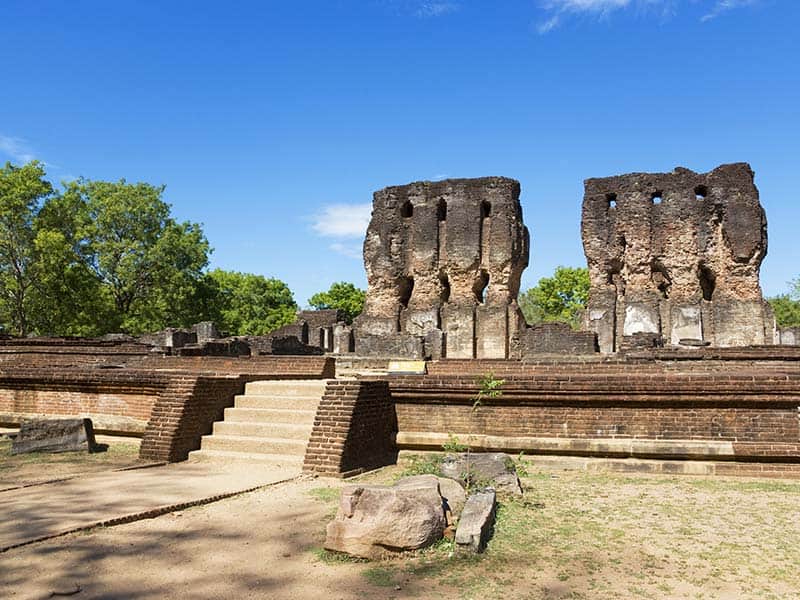Among the primary buildings in the city of Polonnaruwa is the Royal Palace of King Parakramabahu I, its greatest monarch. Known as the Vijayanta Prasada (the second word means “Palace” itself) it was originally a structure of seven stories in height. Therefore it would have been a marvel to the people of the time. However, all that’s left is the lowermost floor the remains of some brick walls that really do not look like much of anything to the casual observer but in reality, they still bear traces of the original plaster that covered the bricks. It would have been brightly painted at the time of its completion when it became an official royal residence.
The main building of the royal palace of King Parakramabahu was part of a larger palace complex within the inner city. All the old cities of Sri Lanka were divided into inner and outer districts. The ministers and the members of the royal family have homes in the inner district. While the middle-class householders and traders, and the artisan castes had theirs in the outer city. The cemeteries were outside the city limits and were inhabited by the lowest class, the Chandalas. Unlike Indian castes though, the local caste system was based on occupation rather than birth-or most probably a mix of the two-and was much more diverse.
As for the royal palace, there is actually a miniature model of what this structure might have looked like in the Polonnaruwa Museum, and blown up to life-size it would be a marvel all on its own. The main palace building would have seemed more like a cross between a large East Asian pagoda and the present Temple of the Tooth but sans the sloping curves of the roofs-as per the former- albeit it would still have had red tiles and whitewashed plastered walls in life as per the latter.
This image is, however, still to be regarded as an architect’s and artist’s reproduction so while speculative it is not entirely out of the realms of possibility. One should probably see the actual place and then begin imagining the scrubland and forests as having been the center of a medieval urban metropolis soon afterward. Then one must see the physical ruins or one wonders if a king of his caliber would even bother with a tiny bit of a place like what’s to be seen at present. From the model of the royal palace, we can gauge that it is part of the inner walls that have been preserved, although it is quite saddening to think that such a vast structure could just be razed down by heartless South and East Indian invaders at the start of the 13th Century.
Written by Vasika Udurawane for Travel Lanka Compass



0 Comment